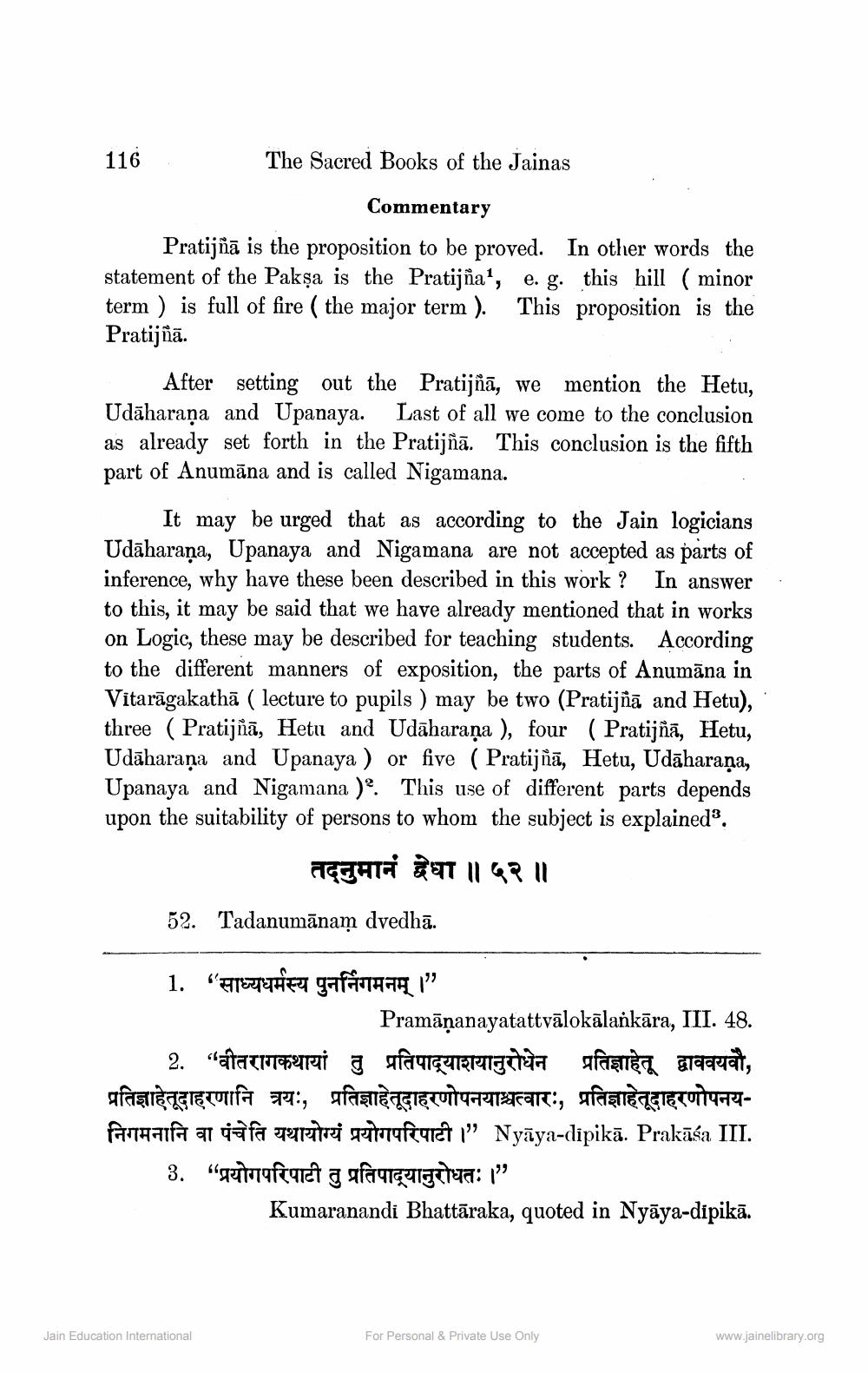________________
116
The Sacred Books of the Jainas
Commentary Pratijñā is the proposition to be proved. In other words the statement of the Pakşa is the Pratijña", e. g. this hill ( minor term ) is full of fire ( the major term ). This proposition is the Pratijñā.
After setting out the Pratijñā, we mention the Hetu, Udāharaṇa and Upanaya. Last of all we come to the conclusion as already set forth in the Pratijñā. This conclusion is the fifth part of Anumāna and is called Nigamana.
It may be urged that as according to the Jain logicians Udāharaṇa, Upanaya and Nigamana are not accepted as parts of inference, why have these been described in this work ? In answer to this, it may be said that we have already mentioned that in works on Logic, these may be described for teaching students. According to the different manners of exposition, the parts of Anumāna in Vitarāgakathā ( lecture to pupils ) may be two (Pratijñā and Hetu), three (Pratijñā, Hetu and Udāharaṇa ), four (Pratijñā, Hetu, Udāharaṇa and Upanaya ) or five ( Pratijñā, Hetu, Udāharaṇa, Upanaya and Nigamana )? This use of different parts depends upon the suitability of persons to whom the subject is explained”.
TGEHTAT ETT 1198 11 52. Tadanumānam dvedhā.
1. Epeakerzen gafirhan1"
Pramāṇanayatattvālokālankāra, III. 48. 2. “वीतरागकथायां तु प्रतिपाद्याशयानुरोधेन प्रतिज्ञाहेतू द्वाववयवौ, प्रतिज्ञाहेतूदाहरणानि त्रयः, प्रतिज्ञाहेतूदाहरणोपनयाश्चत्वारः, प्रतिज्ञाहेतूदाहरणोपनयfamaaifa ar jafà paraitrei pentru fiecareti" Nyāya-dipikā. Prakāśa III. 3. geticafenet a afangulattaa: 1"
Kumaranandi Bhattāraka, quoted in Nyāya-dipikā.
Jain Education International
For Personal & Private Use Only
www.jainelibrary.org




